Knee
- Anatomy
- Conditions
- Procedures
Knee Anatomy
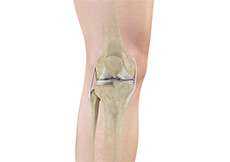
The knee is a complex joint made up of different structures including bones, tendons, ligaments and muscles. They all work together to maintain normal function and provide stability to the knee during movement.
Having a well-functioning healthy knee is essential for our mobility and ability to participate in various activities. Understanding the anatomy of the knee enhances your ability to discuss and choose the right treatment procedure for knee problems with your doctor.
Osteoarthritis of the Knee
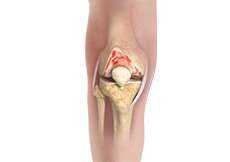
Osteoarthritis is the most common type of arthritis, affecting more than 21 million Americans. Osteoarthritis tends to develop as people get older or from overuse of the knee during work or sports. Osteoarthritis causes the protective covering at the ends of the bones in the knee to gradually wear away, resulting in painful bone on bone rubbing and disrupted movement.
Baker’s Cyst
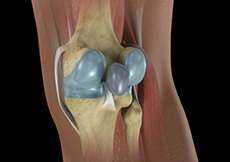
The knee consists of a fluid called synovial fluid, which reduces friction between the bones of the knee joint while you move your leg. Sometimes this fluid is produced in excess, resulting in its accumulation in the back of your knee. A Baker’s cyst or popliteal cyst is a fluid-filled swelling that develops into a lump behind the knee.
Knee Tendon Bursitis - "Goosefoot"
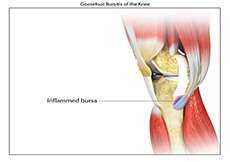
Knee tendon bursitis can develop at the inner (medial) knee. Knee tendon bursitis results from trauma, overuse, and degenerative joint disease. The painful inflammatory condition develops most frequently in athletes, middle-aged women with obesity, and older adults with arthritis.
Patella Fracture
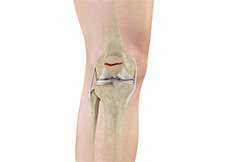
The kneecap or patella is the largest sesamoid bone in the body and one of the components of the knee joint, present at the front of the knee. The undersurface of the kneecap and the lower end of the femur are coated with articular cartilage, which helps in smooth movement of the knee joint.
Meniscus Tear - Knee Cartilage
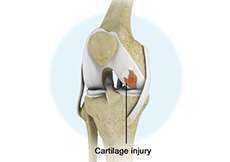
The menisci are cartilage structures in the knee joint that act as buffers between the bones. The menisci are vulnerable to injury, especially during twisting motions used for sports. Some tears in certain parts of the meniscus may heal on their own, but in many cases surgery is necessary.
Stress Fracture - Leg and Foot
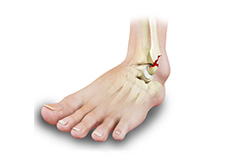
Stress fractures are tiny hairline breaks in the bone. They tend to develop in the legs or feet of dancers, athletes, or military personnel who exercise when their muscles are fatigued or when their bodies are not yet conditioned to the activity level. Rest and physical therapy can help most stress fractures heal. Surgery is used in select cases.
Knee Joint and Bursa Infection
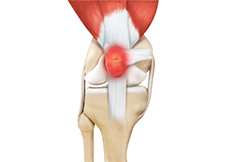
Coming soon.
Total Knee Replacement

The knee is the largest joint in our body. It is one to the most easily injured joints. Knee problems can occur from injury, aging, “wear and tear,” or disease, such as arthritis. Arthritis causes joint pain, stiffness, and swelling. It can affect the cartilage in the knee joint. Cartilage is a very tough, shock absorbing material that covers the ends of many of our bones.
Revision Knee Replacement

Revision knee replacement surgery involves replacing part or all your previous knee prosthesis with a new prosthesis. Although total knee replacement surgery is successful, sometimes the procedure can fail due to various reasons and may require a second revision surgery.
Minimally Invasive Knee Replacement

Knee Replacement Surgery is the most common type of joint replacement surgery. The knee is one of the most easily injured joints. Knee problems can occur from injury, aging, “wear and tear,” and arthritis.
Partial Knee Replacement

Your knee is an important joint that supports the weight of your body and must function correctly for movement and walking. Your knee is made from bone, ligaments and cartilage. One type of cartilage covers the bones, and the other type cushions between the bones.
